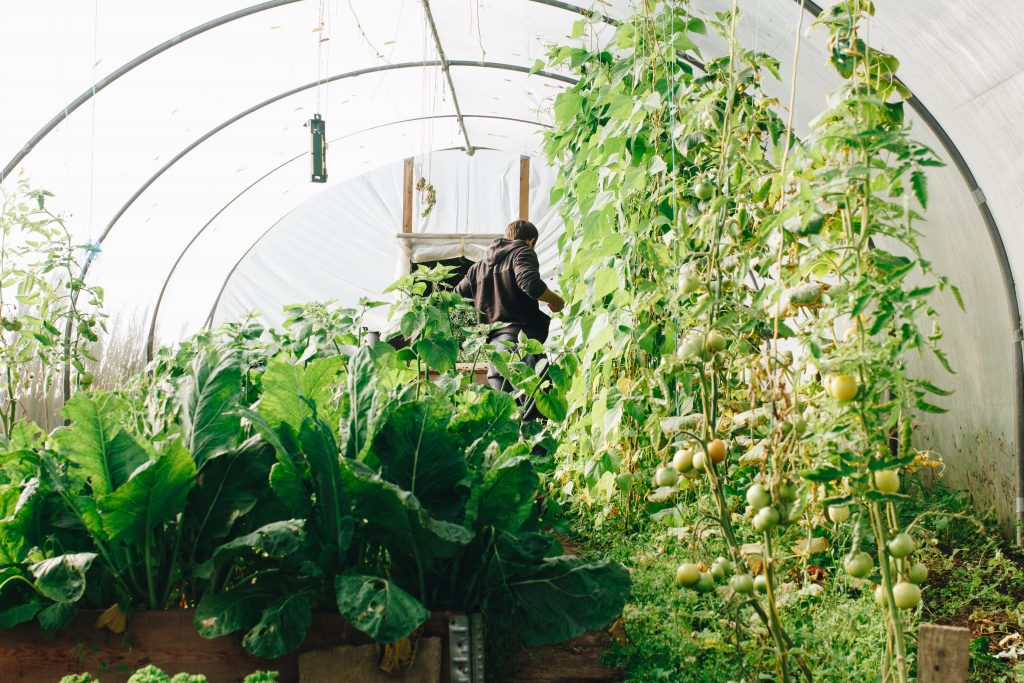
You’ve been growing for a while. You’ve built a DIY greenhouse (or invested in one) and decided that you want to turn your hobby into a profitable small business. Which plants should you focus on growing to ensure steady cash flow? Here are the most profitable greenhouse crops that you should consider growing:
Tomatoes
Tomatoes are the star of the garden world, and they thrive in greenhouse conditions. People love tomatoes! Choose specialty varieties, like heirloom strains, to offer unique selections to your customers. Pick indeterminate varieties for a continuous yield. No farmer’s market stand is quite right without tomatoes, after all.
Leafy greens
Lettuce, kale, chard, spinach are highly sought after produce items. There are also plenty of specialty varieties that can be marketed as gourmet. Leafy greens are easy to grow and harvest. They also mature quicker than many other types of produce. Spinach, for instance, takes less than a month before it’s ready to harvest. People don’t mind paying a premium for fancy, flavorful lettuce mixes.
Rhubarb and Swiss Chard both great options that have edible leafy red stalks, and you can use this free comprehensive guide on how to harvest rhubarb.
Herbs
Basil, cilantro, sage, rosemary. These are all popular with both chefs and home cooks. Most herb plants offer multiple harvests and require minimal space. You can grow them alongside other high-yield crops, as well. If you have an overflow of herbs, it’s also possible to dehydrate them and sell dried, packaged herbs to customers.
Microgreens
Microgreens are a super-profitable greenhouse crop. They’re also incredibly easy to grow and provide a hefty return. You don’t even need a greenhouse to get started with growing microgreens, but a dedicated space is definitely an advantage. It takes less than a month to grow a tray of microgreens so you can harvest A LOT during a season. They also fetch a high price per pound. People love them because they’re tasty and nutritious. The drawback of this crop, though, is the short shelf life.
Things to consider before jumping right in
Of course, starting a hobby farm business and selling profitable greenhouse crops is a bit more complicated than selecting high-value plants. You can’t sell produce without a buyer. Who will buy your plants? Will you sell directly to a local restaurant? Or do you plan to set up at a farmer’s market? Considering demand is vital. Don’t choose what to grow before you fully understand what your buyer wants. If your goal is to sell to a local restauranteur, have a chat and ask about what they might need then plant accordingly.
Think also about how long individual plants take to mature. Tomatoes are popular at farmer’s markets, but they also require a long growing season and take up a significant amount of space. Does it make sense to focus on this crop if you have a tiny greenhouse space? Or should you focus on quick-growing plants that will yield multiple harvests and provide more opportunities for income?
Don’t forget to factor in the effort required to grow plants. Certain types of produce require a lot more effort to grow than others. Many greens, for instance, don’t require a lot of babysitting, but eggplants and tomatoes need a lot more TLC.

Steph Coelho is a freelance writer gardening in zone 5b. She is a certified Square Foot Gardener and has taught various garden-related workshops. When she’s not digging in the dirt or writing, she’s cooking up fresh produce, running, or listening to her favorite podcasts.
Leave a Reply